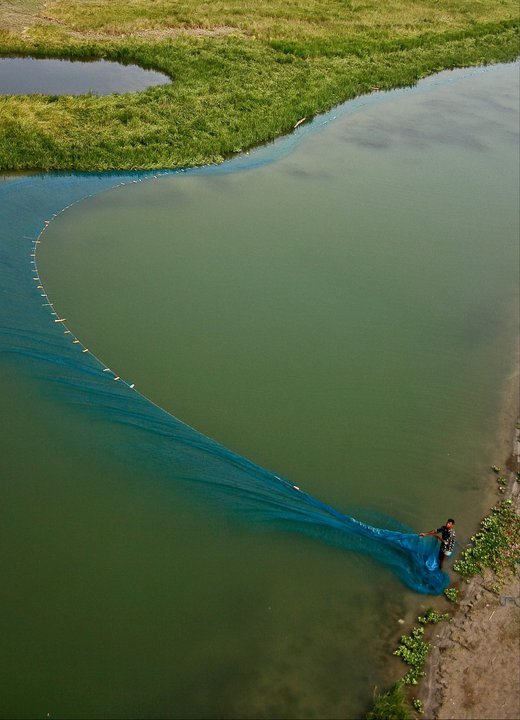CBA and disaster risk reduction in Bangladesh


Fishing along the Northern char lands, Bangladesh. © Agnes Otzelberger / CARE
Through its Strengthening Household Ability to Respond to Development Opportunities (SHOUHARDO II) programme, CARE Bangladesh and partners[2] have been working on improving the adaptive capacities and resilience of char dwellers to disaster and climate change impacts. An integrated CBA/DRR (disaster risk reduction) approach, which combines traditional knowledge with innovative strategies, has been adopted to address current vulnerability while building adaptive capacity to face new and dynamic challenges.
Capacity development for local civil society and government institutions
The project started with an analysis of community vulnerabilities and capacities using the participatory Climate Vulnerability and Capacity Analysis (CVCA). Through this process, local government representatives and communities increased their awareness of climate-related and other types of risks, and were able to propose some adaptation plans and activities.
Participatory extension support has been key to the success of this project – this includes demonstration plots, farmer orientation meetings, field visit days and courtyard discussion sessions. The proposed adaptation and DRR activities were also linked to community plans, relevant service providers, and government planning processes.
Promotion of climate-resilient livelihoods strategies
The project promotes crop diversification, the use of tolerant crop varieties and sustainable agricultural practices (i.e. composting, mulching/water retention techniques, pest management, improved pit and bed system, line sowing and floating beds). It also promotes diversification of income sources through various livelihood options, e.g. duck rearing, improved pond fishery, vegetable farming, nurseries, etc. The use of energy efficient technologies has been encouraged, especially improved cook stoves for the poorest households. An improved stove can contribute to household income, women’s health improvements, household safety and women’s empowerment.
In Char areas, the project promotes low-cost measures that households and communities can maintain themselves, such as simple agricultural technologies/tolerant crop varieties, infrastructure development, energy efficient technologies and local/traditional resource management practices.
Disaster risk reduction strategies to reduce the impact of hazards on vulnerable households
Infrastructure development schemes (that mitigate the effects of disasters and climate change) include: constructing flood shelters within schools, homestead plinth-raising, community ground raising, the construction of a community resource centre and improving drainage. Other activities include building community capacity through equipping local disaster management committees, disaster volunteers and students with knowledge and equipment (e.g. uniforms, megaphones, torches, lifebuoys, first-aid kits). The project is also supporting the development of an early warning flood forecast through partnership with RIMES (the Regional Integrated Multi-hazard Early Warning System for Africa and Asia).
Advocacy and social mobilisation to address the underlying causes of vulnerability
The success of adaptation efforts at individual, household and community levels relies heavily on the existence of an enabling environment for adaptation. This enabling environment consists of government and civil society institutions (at national, district and local levels), with their respective mandates, capacities and policies for identifying and managing climate-related risks. These typically include institutions responsible for disaster preparedness and recovery, environmental protection and management, as well as economic development – agriculture, natural resources, renewable energy and related infrastructure.
The project aims to build institutional capacity and public awareness by providing training and the support necessary to develop local disaster plans that analyse risk and capacities, and to integrate DRR/CBA practices into regional and national development plans. Advocacy activities have tried to amplify the voices of the most vulnerable in regard to disaster and climate change risk management, with a particular focus on land rights, access to common resources, and the inclusion of marginalised groups in decision-making platforms.
(0) Comments
There is no content